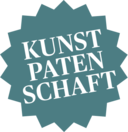Die Krone Stefan Bocskais
um 1605
Die Krone Stefan Bocskais
This crown is associated with a short historical episode. The Counter-Reformatory policies of Rudolph II met with resistance from the Lutheran mountain towns of Upper Hungary. István Bocskay (1557-1606) put himself at the head of the resistance movement; in 1605 he had himself elected count of Transylvania, and, following victories over the imperial army under General George Basta, also prince of Hungary. At Bocskay's request, Sultan Ahmed, who was at war with the emperor, acknowledged him as king of Hungary and on 11 November 1605, Bocskay was crowned king with the present crown by the grand vizier, Lala Mehmed Pasha, on Rakós Field near Pest. Thus the sultan established Turkish sovereignty. Showing consideration for the emperor, Bocskay subsequently declared that he regarded the crown not as a symbol of sovereignty but merely a present from the Turks. The Peace of Vienna with the Hungarians in June 1606 and of Zsitvatörök with the Turks in November of the same year resolved the situation. Bocskay died at the end of December. In 1608 Archduke Matthias was crowned king of Hungary and in November 1609 the Hungarian parliament decided to present him with this crown. The Hungarian palatine, George (Juraj) Thurzo, brought it to Vienna in 1610. Since then it has been in the possession of the Treasury. The crown consists of a circlet with a wreath of fleurs-de-lys and a closed spherical helmet, the two parts joined together with gold wire. The frontal lily is emphasised by a triangular emerald and bears a Greek cross. With the Turks having no tradition of wearing crowns, the shape was modelled after the metal bishop's mitre of the Eastern Church. It in turn was based on the Byzantine kamelaukion (closed Byzantine imperial crown). The case of the crown (Inv. No. SK_WS_XIV_184) is covered with precious Persian silk, which bears the artist's signature "Mu'min" and came from the court of Shah Abbas the Great in Isfahan.
Object data
Object Name
Insigne; Krone
Culture
Türkisch
Dated
um 1605
Material
Gold, Rubine, Spinelle, Samragde, Türkise, Perlen, Seide
Dimensions
23,2 cm × 22 cm, 1757 g
Image rights
Kunsthistorisches Museum Wien, Weltliche Schatzkammer
Inv. No.
Schatzkammer, WS XIV 25
Permalink (citable Link) to this page: www.khm.at/en/object/100646/
Kunst & Patenschaft
This object is still without a Art Patron. Accept the patronage and make sure that this cultural treasure is preserved for future generations.
Your donation is a direct and sustainable contribution to the scientific documentation, research, restoration, and presentation of the artworks of the Kunsthistorisches Museum Wien.

